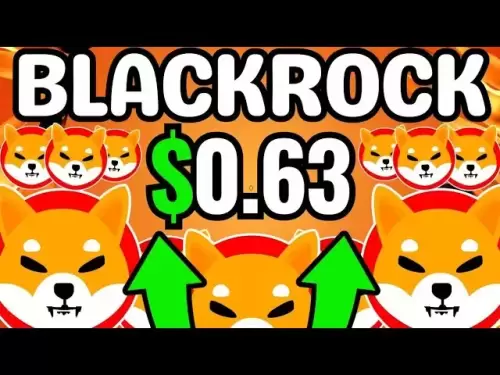-
 Bitcoin
Bitcoin $118100
-0.04% -
 Ethereum
Ethereum $3613
1.77% -
 XRP
XRP $3.442
-0.26% -
 Tether USDt
Tether USDt $1.000
-0.01% -
 BNB
BNB $737.9
1.57% -
 Solana
Solana $178.9
1.27% -
 USDC
USDC $0.9998
-0.01% -
 Dogecoin
Dogecoin $0.2537
4.74% -
 TRON
TRON $0.3185
-2.14% -
 Cardano
Cardano $0.8371
2.09% -
 Hyperliquid
Hyperliquid $44.91
-0.12% -
 Stellar
Stellar $0.4653
0.58% -
 Sui
Sui $3.864
3.04% -
 Chainlink
Chainlink $18.47
2.85% -
 Hedera
Hedera $0.2699
3.22% -
 Bitcoin Cash
Bitcoin Cash $521.6
1.41% -
 Avalanche
Avalanche $24.55
4.79% -
 Shiba Inu
Shiba Inu $0.00001508
2.40% -
 Litecoin
Litecoin $111.6
10.31% -
 UNUS SED LEO
UNUS SED LEO $9.003
0.31% -
 Toncoin
Toncoin $3.191
0.49% -
 Polkadot
Polkadot $4.398
4.55% -
 Uniswap
Uniswap $10.25
2.96% -
 Monero
Monero $327.1
2.44% -
 Ethena USDe
Ethena USDe $1.001
-0.03% -
 Bitget Token
Bitget Token $4.970
1.52% -
 Pepe
Pepe $0.00001356
4.51% -
 Dai
Dai $0.0000
0.00% -
 Aave
Aave $321.1
0.17% -
 Bittensor
Bittensor $416.3
1.67%
How to analyze Bitcoin futures data from CME?
CME Bitcoin futures allow investors to speculate on Bitcoin's price without owning the asset, offering institutional-grade, regulated trading since December 2017.
Jul 19, 2025 at 05:22 pm

Understanding Bitcoin Futures on CME
Bitcoin futures on the CME Group (Chicago Mercantile Exchange) represent a regulated financial instrument that allows investors to speculate on the future price of Bitcoin without owning the underlying asset. These futures contracts are standardized and traded on a centralized exchange, which adds a layer of legitimacy and transparency to the cryptocurrency market. The CME Bitcoin Futures were launched in December 2017 and have since become a key benchmark for institutional investors and traders. Understanding how these contracts work is essential before diving into data analysis.
Accessing Bitcoin Futures Data from CME
To begin analyzing Bitcoin futures data from CME, you must first access the data. CME provides this information through its Market Data Platform, which includes tools like CME DataMine and CME Direct. You can also access this data via third-party platforms such as TradingView, Bloomberg, or Reuters. To get started:
- Visit the CME website and navigate to the Bitcoin Futures section.
- Use the CME DataMine API to pull historical and real-time data.
- Subscribe to CME Direct for live trading and order book data.
- Integrate third-party tools that offer CME Bitcoin futures charting capabilities.
Make sure you understand the contract specifications, including tick size, contract value, and settlement methods.
Key Metrics to Analyze in Bitcoin Futures Data
When analyzing Bitcoin futures data from CME, several key metrics should be considered:
- Open Interest: This shows the total number of outstanding futures contracts. A rising open interest suggests increasing market participation and potential trend continuation.
- Volume: The number of contracts traded during a specific period. High volume can indicate strong market sentiment or a potential price reversal.
- Basis: The difference between the spot price and the futures price. A widening basis can signal changes in demand or supply dynamics.
- Contango and Backwardation: When futures prices are higher than spot prices, it's called contango; when they are lower, it's called backwardation. These can reflect market expectations and funding costs.
- Implied Volatility: Derived from options pricing, implied volatility helps gauge market uncertainty and potential price swings.
These metrics should be monitored regularly and compared with Bitcoin spot price movements to identify potential trading signals.
Using Order Book and Depth Analysis
The CME Direct platform allows users to view the order book depth for Bitcoin futures contracts. This feature provides insight into market liquidity and potential support/resistance levels. Analyzing the order book can help identify:
- Large buy or sell walls that may influence price direction.
- Order flow imbalances that suggest institutional activity.
- Bid-ask spreads that reflect market liquidity and volatility.
You can use tools like Glassnode or Bybt for enhanced order book analytics, although they may not directly integrate with CME data. For real-time depth charts, you may need to use CME Direct or a compatible third-party platform like Trading Technologies or Rithmic.
Correlation with Spot Market and Other Assets
Analyzing Bitcoin futures data from CME is incomplete without comparing it to the spot market and other financial assets. Many traders track the futures vs. spot price divergence to detect arbitrage opportunities or market manipulation. Additionally:
- Correlate Bitcoin futures with traditional assets like gold, the S&P 500, or the U.S. dollar index.
- Monitor macroeconomic indicators such as inflation rates, interest rates, and Fed policy, which can influence both Bitcoin and traditional markets.
- Compare CME futures data with other exchanges like Binance Futures or Deribit to assess global sentiment.
This cross-market analysis helps in forming a more comprehensive view of Bitcoin's price action.
Building a Data Analysis Framework
To effectively analyze Bitcoin futures data from CME, establish a structured framework:
- Set up a data pipeline using Python or R to pull and clean data from CME APIs.
- Use Pandas and NumPy libraries to calculate moving averages, volatility metrics, and other technical indicators.
- Visualize data using Matplotlib, Plotly, or Tableau for better insights.
- Create alerts for significant changes in open interest, volume, or price divergence.
Automating this process allows for real-time monitoring and quicker decision-making.
FAQs
Q: What is the contract size for CME Bitcoin futures?
A: Each CME Bitcoin futures contract represents 5 Bitcoin.
Q: How often are CME Bitcoin futures settled?
A: They are cash-settled based on the CME CF Bitcoin Reference Rate (BRR), calculated daily at 4:00 PM London time.
Q: Can retail traders access CME Bitcoin futures?
A: Yes, but they typically require a margin account with a broker that offers access to CME Group products.
Q: Are CME Bitcoin futures regulated?
A: Yes, they are regulated by the Commodity Futures Trading Commission (CFTC) in the United States.
Disclaimer:info@kdj.com
The information provided is not trading advice. kdj.com does not assume any responsibility for any investments made based on the information provided in this article. Cryptocurrencies are highly volatile and it is highly recommended that you invest with caution after thorough research!
If you believe that the content used on this website infringes your copyright, please contact us immediately (info@kdj.com) and we will delete it promptly.
- WLFI Token Trading Approved: From Trump Ties to Community Votes
- 2025-07-20 09:10:12
- CoinDCX's $44.2 Million Security Breach: A Wake-Up Call for Crypto Exchanges
- 2025-07-20 08:30:13
- Trump, WLFI, and Token Release: A New York Minute on Crypto
- 2025-07-20 08:30:13
- Ripple's RLUSD: The Bluechip Stablecoin Set to Disrupt the Market?
- 2025-07-20 08:50:11
- Bitcoin Price Action: Is Weakening Demand on the Horizon?
- 2025-07-20 08:50:11
- Ripple's RLUSD: Top-Ranked Stablecoin Shaking Up the Market
- 2025-07-20 08:55:12
Related knowledge

What is a maker vs a taker fee?
Jul 19,2025 at 01:14am
Understanding the Basics of Cryptocurrency Exchange FeesIn the world of cryptocurrency trading, maker vs taker fees are a fundamental concept that eve...

How to analyze Bitcoin futures data from CME?
Jul 19,2025 at 05:22pm
Understanding Bitcoin Futures on CMEBitcoin futures on the CME Group (Chicago Mercantile Exchange) represent a regulated financial instrument that all...

How to understand the liquidation price?
Jul 19,2025 at 10:00pm
What Is a Liquidation Price in Cryptocurrency Trading?In the realm of cryptocurrency futures and margin trading, the liquidation price refers to the s...

What is time in force (GTC, IOC, FOK)?
Jul 19,2025 at 08:57am
Understanding Time in Force in Cryptocurrency TradingIn the world of cryptocurrency trading, the Time in Force (TIF) is a crucial parameter that deter...

What is a partial liquidation?
Jul 19,2025 at 01:49am
Understanding the Basics of Partial LiquidationIn the world of cryptocurrency trading, especially within leveraged positions, partial liquidation refe...

How to find good entry and exit points for Bitcoin futures?
Jul 19,2025 at 05:14pm
Understanding Bitcoin Futures and Their Unique CharacteristicsBitcoin futures are derivative contracts that allow traders to speculate on the future p...

What is a maker vs a taker fee?
Jul 19,2025 at 01:14am
Understanding the Basics of Cryptocurrency Exchange FeesIn the world of cryptocurrency trading, maker vs taker fees are a fundamental concept that eve...

How to analyze Bitcoin futures data from CME?
Jul 19,2025 at 05:22pm
Understanding Bitcoin Futures on CMEBitcoin futures on the CME Group (Chicago Mercantile Exchange) represent a regulated financial instrument that all...

How to understand the liquidation price?
Jul 19,2025 at 10:00pm
What Is a Liquidation Price in Cryptocurrency Trading?In the realm of cryptocurrency futures and margin trading, the liquidation price refers to the s...

What is time in force (GTC, IOC, FOK)?
Jul 19,2025 at 08:57am
Understanding Time in Force in Cryptocurrency TradingIn the world of cryptocurrency trading, the Time in Force (TIF) is a crucial parameter that deter...

What is a partial liquidation?
Jul 19,2025 at 01:49am
Understanding the Basics of Partial LiquidationIn the world of cryptocurrency trading, especially within leveraged positions, partial liquidation refe...

How to find good entry and exit points for Bitcoin futures?
Jul 19,2025 at 05:14pm
Understanding Bitcoin Futures and Their Unique CharacteristicsBitcoin futures are derivative contracts that allow traders to speculate on the future p...
See all articles

























































































